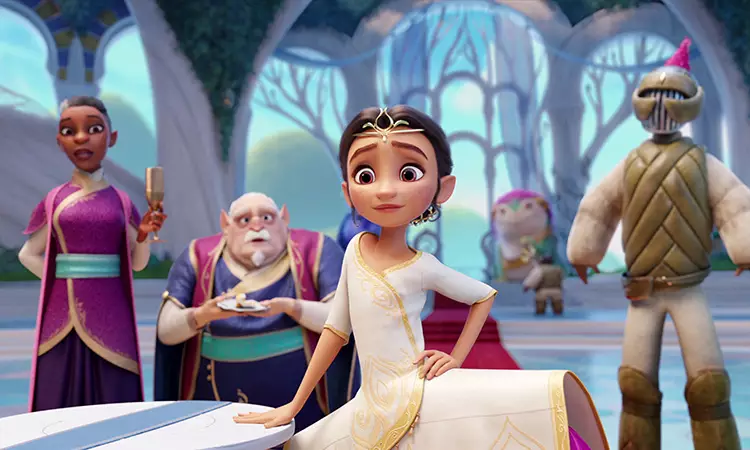Vicky Jenson, renowned for her pioneering work in animation, has returned to her roots with the Netflix release of “Spellbound.” Jenson, who first captivated audiences with her co-direction on the iconic film “Shrek,” has always harbored a passion for fairy tales—especially the darker variations. Her fascination lies in narratives filled with challenges, where characters harbor profound desires and confront adversity, a theme that resonates throughout her latest project.
Jenson reflects on her journey in the animation industry, illustrating her humble beginnings as a cell painter. This foundational experience laid the groundwork for her evolving career, which saw her navigating various roles—from background painter on shows like “The Smurfs” to storyboarding for classics such as “Ren and Stimpy.” Her early work ignited her ambition to direct, and despite initial struggles, each role enriched her storytelling capabilities, fortifying her career trajectory back into the realm of animation.
“Spellbound” encapsulates a modern fairy tale narrative that diverges from traditional tropes. The storyline follows Ellian, the courageous daughter of the royal family of Lumbria, whose idyllic life is upended when a malevolent spell turns her parents into monsters. Unlike typical fairy tales, where usually a prince rescues a princess, this tale places the onus on Ellian, thereby shifting the narrative gaze to a young woman’s quest for familial redemption.
The film delves into profound themes, exploring the emotional tumult accompanying growth and change. As Jenson explains, “Fairy tales define through allegory the myriad stages of human experience.” With its vibrant settings and familiar archetypes—a kingdom, a king, a queen, and a spell—the film artfully weaves a fresh tapestry of mythos, exploring the emotional dynamics that bind families together even amidst transformation.
Ellian is voiced by Rachel Zegler, already making waves in the industry before landing this role. Jenson praises Zegler not only for her immense talent as a singer and actress but also for her professionalism at such a young age. Zegler’s representation of Ellian is further enhanced by a stellar cast, including John Lithgow, Tituss Burgess, Nathan Lane, Nicole Kidman, and Javier Bardem. Each voice contributes uniquely to the narrative, bringing depth and personality to their animated counterparts.
Bardem, in particular, focused extensively on understanding his character, contributing to the emotional palette of the film through nuanced vocal work that resonated with both the animation team and the direction of the story. As Jenson asserts, the performances of the actors are foundational to the animation process, showcasing the integral relationship between voice and artistic interpretation.
Intriguingly, “Spellbound” wasn’t initially conceived as a musical. It was only after a creative dinner discussion that the concept of integrating song into the narrative took flight. This decision transformed the filmmaking process, allowing Jenson and her team to collaborate with legendary composer Alan Menken and lyricist Glenn Slater. Known for their work on animated classics, their involvement underscores a commitment to crafting a memorable musical experience.
Jenson acknowledges the serendipitous timing of this development, which allowed for the songs to evolve alongside the story’s narrative arc. She highlights the emotional weight often conveyed through music, suggesting that sometimes speech is insufficient for expressing profound feelings. This stylistic choice aims to resonate with families, encouraging discussions about the multifaceted nature of love and relationships within family structures.
Ultimately, “Spellbound” stands as a reflection on the ever-changing dynamics of family life. Jenson aligns the film’s narrative with the concept that love is the true unifying force in all familial bonds, regardless of how those structures manifest. This contemporary take allows audiences to relate to Ellian’s journey—illustrating that growth often accompanies challenges and transformations that may not always revert to their original form.
In a world filled with preconceived notions of family and identity, Jenson’s “Spellbound” offers a nuanced perspective reshaping traditional fairy tale conventions. By putting a young woman at the center, the film not only defies expectations but also reinforces that everyone has the power to face adversity, shape their destiny, and navigate the complexities of love—making it both a timely and timeless tale for audiences of all ages.

